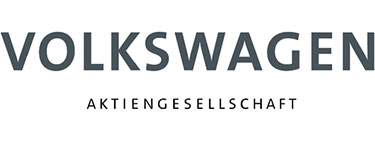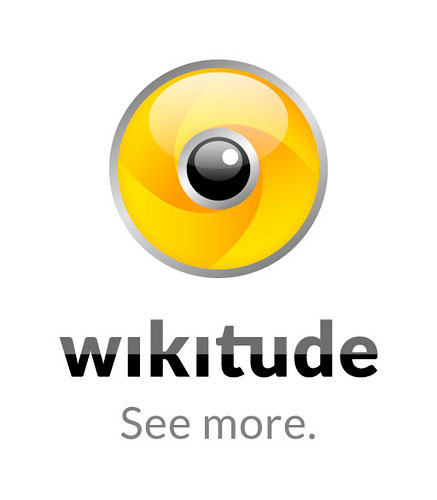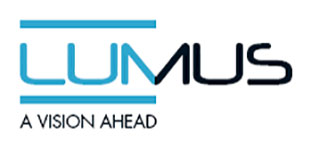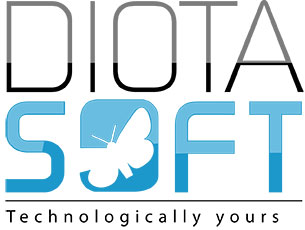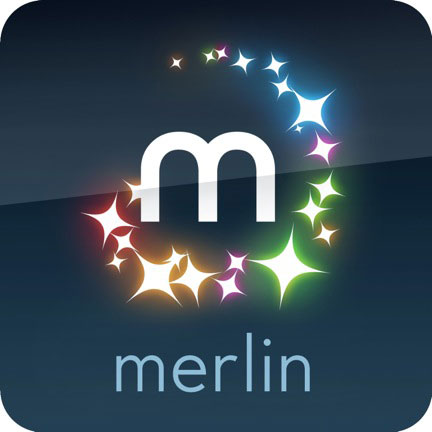MASH'D Submission Guidelines
MASH’D Submission Guidelines
Submission Deadlines
- Paper Abstracts: March 18, 2014, 23:59 US Pacific Time (Extended to: March 19, 2014, 23:59 US Pacific Time)
- Paper Submission MASH’D: March 25, 2014, 23:59 US Pacific Time (Extended to: March 28, 2014, 23:59 US Pacific Time)
- Poster Submission MASH’D: June 8, 2014 23:59 US Pacific Time
Papers
Papers must be from 4 -8 pages will be published in the ISMAR 2014 conference proceedings and included in the IEEE Xplore digital library. All papers will be presented orally at the conference. There is no distinction between long and short Papers in terms of the expected quality. The acceptance for publication will be partly based on the contribution per page of the paper. For example, a paper with eight pages will be expected to have more contribution than one with four pages. Material simultaneously submitted to ISMAR 2014 and another venue will be rejected without review.
Accepted papers will be presented at the conference in talks (15-20 min.), with the allotted presentation time dependent upon the length and content of the paper. Papers are also eligible for one of a number of best paper awards which will be announced for both S&T and MASH’D tracks during the conference. The acceptance for publication will be partly based on the contribution per page of the paper.
We especially encourage artists, designers, social scientists and practitioners to submit their exciting, intriguing and novel works to MASH’D track.
Examples of topics appropriate for a presentation in fewer pages are:
Research paper
A smaller, focused research result that can be completely described and justified in fewer than 8 pages in the area of Media/Communication, Social Science, Arts, Design and Humanities.
An application case study.
A novel AR application addressing human behaviors, interaction and design issues falling into MASH’D domain. Supplementary materials (such as video clips) are encouraged to be submitted with the paper.
Interaction model/Design methodologies/conceptual model
An original framework, concept and methodology which that can give AR researchers, designers and practitioners new insights for creating AR applications, design and art works. Please state the steps and processes or accompany with an AR application as the example.
Posters
Posters provide an interactive forum where authors can present work to conference attendees during a poster session. Accepted posters will be displayed on large boards (A0 size, or about 840mm x 1200mm / 2.75ft. x 4 ft.). Poster authors will also have one minute to describe their poster during a “poster teasers” preview before any of the poster sessions.
Authors wishing to present a poster must submit a two-page poster submission describing the research to be presented in the poster. Poster submissions are reviewed by the Program Committee via the same procedure as papers, but they are judged much more leniently because of the short length and because they do not count as an ISMAR publication. Note that poster submissions will be published in the conference proceedings, and archived in the associated digital library. We encourage poster submissions on new work that is still in progress, or small, highly focused results. The main criteria are novelty and usefulness to the ISMAR community.
Submission Rules
1. Papers and posters must be written in English.
2. An abstract for the paper should be submitted at the abstracts deadline before a full version can be submitted. This helps us to assign submissions to members of the Program Committee in advance. There won't be any assessment or review of the paper between both deadlines; the abstract deadline is just informative for us.
3. A submission can only be submitted under one program (Science & Technology or Media professionals, Artists, Social Scientists, Humanity scholars and Designers) and under one category (paper or posters). You must not submit the same material simultaneously to different programs or categories. However, you are more than welcome to make multiple different submissions for both programs.
4. Submissions must not be under review by any other conference, journal or other publication venue during ISMAR’s reviewing period, and must not be previously published or accepted for publication elsewhere. ISMAR actively searches for duplicate submissions by exchanging author and title lists with other conferences and journals. Such submissions will be rejected without review, and the coordinators of the duplicate submission will be notified.
5. Papers must be strictly formatted according to the IEEE Computer Society VGTC authoring guidelines ( http://www.cs.sfu.ca/~vis/Tasks/camera.html) and submitted electronically as PDF documents. ISMAR uses a single-blind reviewing process. Thus, authors and affiliations may be mentioned.
6. Authors may include supplementary materials (such as a video) with the submission, and such materials are highly encouraged if they provide evidence of the claimed contribution. Videos should not be longer than five minutes, and the total size of all submitted materials (including the PDF document) must be under 50MB. If you include a video, also include a text file describing what codec you used to create the video. Videos should be playable by either the current Windows Media Player, Apple Quicktime player, or VLC. It is preferable that your video be playable by these standard players without requiring additional codec installations. If you require a special codec (e.g., DivX), make certain that you include instructions on how to find and install that codec. If the reviewers cannot play your video file, it may reduce the chances of your submission being accepted.
7. The submission should include all information necessary to evaluate the paper and must not ask reviewers to go to web sites or other external information sources, since that might circumvent page and media format limits, and may jeopardize the anonymity of the reviewers. Submissions that require external sites will either be returned for correction or rejected without review.
8. For accepted papers and posters, at least one author must register for the conference and present the work. If no author is registered by the early registration deadline, the accepted work will be withdrawn from the proceedings and digital libraries.
Submission Process
Papers and Posters templates (TEX, DOC) are available here:
http://www.cs.sfu.ca/~vis/Tasks/camera.html
All materials will be submitted electronically through the Precision Conference website (which will be ready early March, 2014) at:
https://www.precisionconference.com/~ismar/
If you already have an account with that system, please use that account to submit your materials. Otherwise, create a new account. After login, select the area and type of your new submission:
Science and Technology Papers
MASH'D Papers
Science and Technology Posters
MASH'D Posters
As part of the submission you will be able to choose a major topic and a list of associated keywords.
After Submission
After you submitted your paper or poster, the following process takes place:
1. The submission will be reviewed by the Program Committee and external reviewers.
2. After all reviews are in, authors can see the reviews and write a short rebuttal to clarify questions or errors in the reviews.
3. Based on the reviews (external, meta) and the rebuttal, the Program Committee will make a final decision about which contributions to accept in the PC meeting in June 2014.
4. You will receive a notification of acceptance or rejection in the following week.
5. If your submission was accepted or conditionally accepted, a camera-ready version must be submitted.
6. Papers will be presented in oral sessions, while posters are presented in dedicated poster sessions at the conference.
Reviewing Process
ISMAR is a high-quality conference with a competitive submission process. In 2013, ISMAR AMH accepted only 37.5% of the papers submitted. For information on past conferences including acceptance rates and best paper awards see the ismar.net website.
ISMAR has a rigorous reviewing process that is similar to the processes used by ACM CHI. Every submitted paper and poster is subjected to this process.
Reviewing: We have two tiers of reviewers: the Program Committee and a pool of reviewers. Each paper is assigned to a member of the Program Committee, and that person will procure at least two to four reviews from the reviewers or additional external reviewers, in addition to providing a meta review. For posters, three reviews are obtained plus the additional meta reviews.
Papers: Paper length is from four to eight pages. They must describe a novel contribution to the field and provide the evaluations necessary to prove the claims of the contribution. There is no distinction between four and ten pages papers in terms of the expected quality; all papers are held to rigorous standards of contribution and evaluation. The acceptance for publication will be partly based on the contribution per page of the paper. The final merit of a paper will be determined by the reviewers and the Program Committee.
Posters are reviewed through the same procedure as papers, but are much more leniently judged due to space limitations and because they do not count as a publication. We encourage posters on new work that is still in progress, or small, highly focused results. The main criteria are novelty and usefulness to the ISMAR community.
Rebuttals: After all reviews are in, the website will be open for authors to read their reviews and provide a short rebuttal (up to 3000 characteristics). The purpose of the rebuttal is to correct factual errors in the review or clarify questions raised in the reviews. No new material, results, or data may be included in the rebuttal. Any such information will be deleted. After the rebuttal period, the assigned Program Committee member will prepare a recommendation for the PC meeting, taking into account reviews, rebuttal, and any further discussion by the reviewers.
Then the Program Committee and Program Chairs will meet to discuss the papers and posters and determine which to accept. We have two different program committees for papers and posters: one for the S&T track and the other for the MASH’D track.
Best paper awards are selected by an independent committee from the accepted papers. Criteria for selection include the grading obtained through the reviews, the novelty of the work, and the quality of the presentation.
Also see the Reviewing Guidelines for more information.
Accepted Papers and Posters
If your submission is accepted, the following steps are required:
· Submit a camera-ready copy for the proceedings. Please take the recommendations from the reviews into account when preparing the final version.
· Posters require a printed poster and a one-slide teaser for the poster fast-forward session.
· At least one author must register with the conference before the early registration deadline to present the work and ensure that it is included in the proceedings.
Camera Ready
Upload the final version to the same site you submitted your original paper/poster by July 7, 2014.
https://www.precisionconference.com/~ismar/
Use the "Final Submission Form" to provide your final version and any supplementary material such as video files, poster teaser slides.
In the preparation of the final submission, follow the formatting and submission guidelines here:
http://www.cs.sfu.ca/~vis/Track/ismar.html
Ensure that you are using the correct formatting and submit the IEEE copyright form. Otherwise, your contribution might not be included in the proceedings.
Presentations
Presentations of MASH’D papers are assigned to one of oral sessions at the conference (this section is subject to be updated).
Your presentation should be between 15-20 min. maximum.
There will be an additional 5 min. for questions and hand-over between the presentations.
Please use the break before your session to meet your session chair and test your equipment.
Posters
The printed posters should have A0 size (840mm x 1200mm / 2.75ft. x 4 ft.) or smaller, either portrait or landscape. Portrait will work better with the available poster boards.
Also, prepare a one-slide teaser for the poster teaser presentation. There will be one minute to present the teaser.





